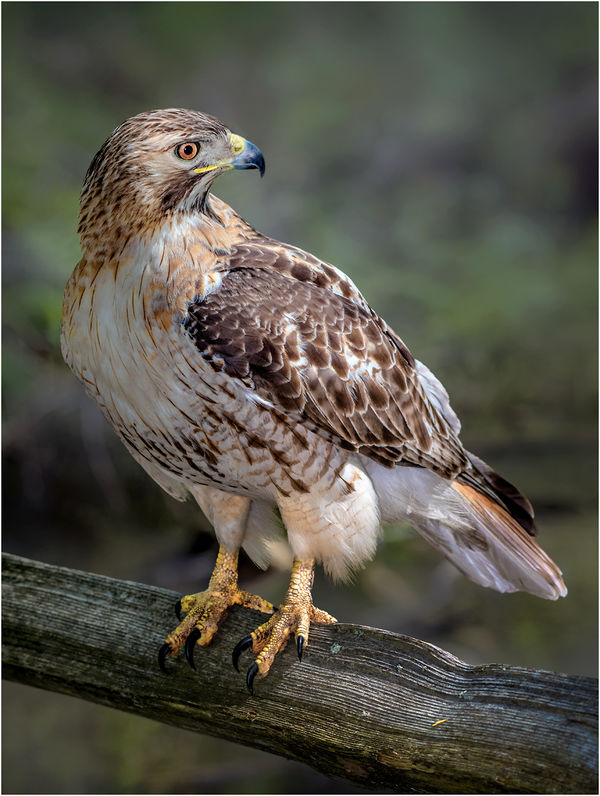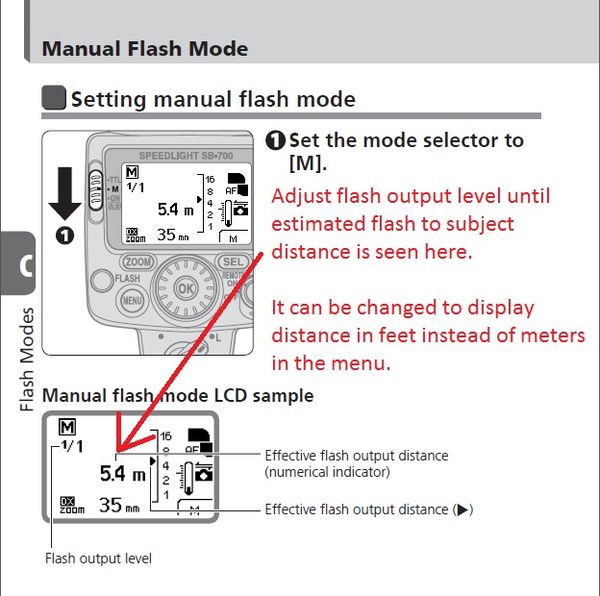Flash Photography in Manual Mode
May 29, 2018 10:36:21 #
I have a Nikon D750 and I like to shoot in manual mode. However when I need a flash, for other than fill mode, I get confused with the light meter. Can anyone recommend an article or a book so that I can get a better understanding of how to setup my camera for the best results in dark settings. If I up ISO so that the meter reads correctly and use a flash I wash out the picture. I'm missing a concept and hope that someone can help. Thanks in advance.
May 29, 2018 10:40:01 #
May 29, 2018 10:54:17 #
tscali wrote:
I have a Nikon D750 and I like to shoot in manual mode. However when I need a flash, for other than fill mode, I get confused with the light meter. Can anyone recommend an article or a book so that I can get a better understanding of how to setup my camera for the best results in dark settings. If I up ISO so that the meter reads correctly and use a flash I wash out the picture. I'm missing a concept and hope that someone can help. Thanks in advance.
The meter indicates the level of ambient light. If you crank the ISO up so that the meter said OK then you wouldn't need the flash. So in dark place and you need flash you would leave the meter indicates underexposure. Only when you use the flash as fill in bright light do you consider the meter reading.
May 29, 2018 11:08:45 #
Agree tradio about Peterson's book 
I recommend these articles -
https://learn.zoner.com/flash-photography-step-step/
https://learn.zoner.com/external-flashes-the-ons-and-offs/
These are just a couple of articles available on the web - do a search and you will find many more -

I recommend these articles -
https://learn.zoner.com/flash-photography-step-step/
https://learn.zoner.com/external-flashes-the-ons-and-offs/
These are just a couple of articles available on the web - do a search and you will find many more -
May 29, 2018 11:21:15 #
Not sure of your question. This was shot on manual with Fill Flash. If you want a balanced fill flash effect for outdoor shots, using a Nikon Speedlight set the flash mode to: TTL,BL,FP and set your flash compensation to minus 1 2/3.
tscali wrote:
I have a Nikon D750 and I like to shoot in manual mode. However when I need a flash, for other than fill mode, I get confused with the light meter. Can anyone recommend an article or a book so that I can get a better understanding of how to setup my camera for the best results in dark settings. If I up ISO so that the meter reads correctly and use a flash I wash out the picture. I'm missing a concept and hope that someone can help. Thanks in advance.

May 29, 2018 12:12:17 #
When I shoot manual with a flash with film I focus on two focal lengths--f/2.8 and f/5.6. And 1/45th of a second--assuming 100 ISO film. This is because my favored flash is basically manual--but will meter at those two settings. The flash can also be set for full power--then the question is one of film ISO, f-stop, shutter speed. I have found that I needed to practice to get the look that I like. I can also use this flash unit on a digital camera, but I have found it behaves differently--I use 1/250th of a second generally--but stick to the same focal lengths as a starting point. Again, one has to practice to get a sense for the light conditions. When I use a flash not within these practiced parameters, I generally go with auto settings and the speedlight is generally good enough to get it right.
All that said, I prefer not to use a flash but will do so when needed--indoors with film and outdoor backlit scenes with faces of people mostly.
All that said, I prefer not to use a flash but will do so when needed--indoors with film and outdoor backlit scenes with faces of people mostly.
May 29, 2018 12:41:48 #
tradio wrote:
Bryan Peterson has a decent book on flash photography.
 I have Bryan Peterson's book: "Understanding Flash Photography". He has a great technique for dealing with situations where the main subject is close to the camera and is getting washed out. He puts both the camera and flash in manual mode. He exposes for the background with the camera settings in manual mode. When the flash is in manual mode, it will show the ideal subject and flash distance on its LCD screen. You estimate how far away the main subject is and adjust the flash output until it shows the estimated distance on its LCD screen. It works well. I've tried it.
I have Bryan Peterson's book: "Understanding Flash Photography". He has a great technique for dealing with situations where the main subject is close to the camera and is getting washed out. He puts both the camera and flash in manual mode. He exposes for the background with the camera settings in manual mode. When the flash is in manual mode, it will show the ideal subject and flash distance on its LCD screen. You estimate how far away the main subject is and adjust the flash output until it shows the estimated distance on its LCD screen. It works well. I've tried it.May 29, 2018 13:02:53 #
There is a simple MANUAL method that has been used for decades. You need to establish a real guide number for you flash unit. This method is used when the flash is the primary light source- not as a fill!
First set up your camera, flash attached in an average size room at exactly 10 feet from a subject - preferably a person. Make a series of exposures in 1/2 stop increments at a given ISO and power setting. Then observe the results to determine the best exposure- check the skin tone, look for shadow detail in darker clothing and check out the histogram. If the best exposure, fro example is f/8- multiply: 8x10 indicating a GN of 80. The divide any distance into the GN. 6 feet would go at f6.3, 12 feet would be f.12.5 and so on. Alwaw tes- manufacturer's published GNs can vary!
So here the learning curve and the routine: You need to be able to estimate distances. The prepare list of footages and CORRESPONDING f/ stops at 4,6,8,10,12,15,20 and 25 feet.Type it on a small sticker and apply it to the back of the flash head. After a while and with practice you will memorize the routine.
This may sound very low tech, difficult and silly, however, this method was used for time immemorial by experienced wedding and press photographers for quick and accurate falsh usage. I used this system for shoot Kodachrome stereo slides at weddings- that film hadlitte or no latitude and all my exposures were right on.
If you conduct the test a fill power , 1/2 ha power will yield 1 less stop. For bounce in a small or medium size room with light walls and ceilings just add 2 stops. In a very large are such as a reception hall, a church or out of doors at nigh, you may loose a stop. Remeber, if you modify the flash, change IOS or power output setting, ALL GN bets are off. but again you can, through testing, determine the differentials.
Again this is strictly manual!.. You must keep you shutter speeds within your camera's synch limitation but if you use moderately slow but still hand-holdable speeds, you will admit some ambient light. If you camera has a reliable auto or TTL flash feature, there is no need to do all this once you have the system under control and you know how it operates.
If you se a second off camera light, consider it the main and keep the on-camera unit 1 to 2 stops below the main for a nice ratio.
If you are not gunning and running, a flash meter is a good alternative for full manual shooting. Even for flash fill, if you know your unit's GN you will gain better control over you fill lighting ratios at various distances.
I have been shooting weddings, events, sports and many other spontaneous scenarios with flags and multiple flash and never need to use TTL or Auto flash or consult a meter out of the studio.
First set up your camera, flash attached in an average size room at exactly 10 feet from a subject - preferably a person. Make a series of exposures in 1/2 stop increments at a given ISO and power setting. Then observe the results to determine the best exposure- check the skin tone, look for shadow detail in darker clothing and check out the histogram. If the best exposure, fro example is f/8- multiply: 8x10 indicating a GN of 80. The divide any distance into the GN. 6 feet would go at f6.3, 12 feet would be f.12.5 and so on. Alwaw tes- manufacturer's published GNs can vary!
So here the learning curve and the routine: You need to be able to estimate distances. The prepare list of footages and CORRESPONDING f/ stops at 4,6,8,10,12,15,20 and 25 feet.Type it on a small sticker and apply it to the back of the flash head. After a while and with practice you will memorize the routine.
This may sound very low tech, difficult and silly, however, this method was used for time immemorial by experienced wedding and press photographers for quick and accurate falsh usage. I used this system for shoot Kodachrome stereo slides at weddings- that film hadlitte or no latitude and all my exposures were right on.
If you conduct the test a fill power , 1/2 ha power will yield 1 less stop. For bounce in a small or medium size room with light walls and ceilings just add 2 stops. In a very large are such as a reception hall, a church or out of doors at nigh, you may loose a stop. Remeber, if you modify the flash, change IOS or power output setting, ALL GN bets are off. but again you can, through testing, determine the differentials.
Again this is strictly manual!.. You must keep you shutter speeds within your camera's synch limitation but if you use moderately slow but still hand-holdable speeds, you will admit some ambient light. If you camera has a reliable auto or TTL flash feature, there is no need to do all this once you have the system under control and you know how it operates.
If you se a second off camera light, consider it the main and keep the on-camera unit 1 to 2 stops below the main for a nice ratio.
If you are not gunning and running, a flash meter is a good alternative for full manual shooting. Even for flash fill, if you know your unit's GN you will gain better control over you fill lighting ratios at various distances.
I have been shooting weddings, events, sports and many other spontaneous scenarios with flags and multiple flash and never need to use TTL or Auto flash or consult a meter out of the studio.
May 29, 2018 13:38:38 #
What type of flash are you using now? Higher-end flashes can be used in manual, as in the flash is manually configured separate from the camera. Mine step from full power to 1/128 strength in 1/3-increments. I can set the desired exposure in the camera and manually dial-in the exact amount of output from the flash. You can also use flash exposure compensation, both in the camera and on the flash, depending on models. Learning how to control the flash output, via your body and /or speedlight, will help in the success of your flash photography.
May 29, 2018 13:52:25 #
May 29, 2018 19:29:18 #
CHG_CANON wrote:
What type of flash are you using now? Higher-end f... (show quote)
 That's the method that Bryan Peterson describes in his book on flash photography. You can get the foreground and background more evenly exposed.
That's the method that Bryan Peterson describes in his book on flash photography. You can get the foreground and background more evenly exposed.May 29, 2018 19:35:46 #
This is the LCD screen on my flash when it is in manual mode. It takes into consideration the ISO and aperture settings when it calculates the effective distance. I would think that all speedlights that have a manual mode have a similar display.
May 29, 2018 19:47:34 #
tscali wrote:
I have a Nikon D750 and I like to shoot in manual mode. However when I need a flash, for other than fill mode, I get confused with the light meter. Can anyone recommend an article or a book so that I can get a better understanding of how to setup my camera for the best results in dark settings. If I up ISO so that the meter reads correctly and use a flash I wash out the picture. I'm missing a concept and hope that someone can help. Thanks in advance.
On the YouTubes, look for The Slanted Lens and Tony Northrop's channels. Lots of great flash applications there.
May 29, 2018 19:49:50 #
E.L.. Shapiro wrote:
There is a simple MANUAL method that has been used... (show quote)
How should the room be lit for this exercise?
May 29, 2018 20:26:36 #
Fotoartist wrote:
Not sure of your question. This was shot on manual with Fill Flash. If you want a balanced fill flash effect for outdoor shots, using a Nikon Speedlight set the flash mode to: TTL,BL,FP and set your flash compensation to minus 1 2/3.
Wow! That is in my opinion, a great shot.
If you want to reply, then register here. Registration is free and your account is created instantly, so you can post right away.









